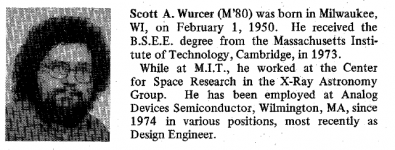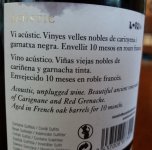Letters of Euler on different subjects in physics and philosophy : addressed to a German princess ; translated from the French : Euler, Leonhard, 1707-1783 : Free Download & Streaming : Internet Archive
Letters of Euler on different subjects in physics and philosophy : addressed to a German princess ; translated from the French : Euler, Leonhard, 1707-1783 : Free Download & Streaming : Internet Archive
George
Letters of Euler on different subjects in physics and philosophy : addressed to a German princess ; translated from the French : Euler, Leonhard, 1707-1783 : Free Download & Streaming : Internet Archive
George
I was very proud of myself (not being a maths guy) when after reading years of bad approximations of the efficiency of class G and class H amplifiers I derived it in closed form as an appendix in an ISSCC paper. It became the textbook standard derivation.
Scott, I looked (on the red IEEE DVD) but couldn't find it. Is it one of these papers shown below, and I'm just blind as a bat?
Or maybe your presentation was at the BCTM, which isn't included with the red DVD?
Looky what I *did* find however.
_
Attachments
Scott, I looked (on the red IEEE DVD) but couldn't find it. Is it one of these papers shown below, and I'm just blind as a bat?
Or maybe your presentation was at the BCTM, which isn't included with the red DVD?
Looky what I *did* find however.
_
I swear it was in one of the first two. You got my "make mom and pop sure they didn't want you to go to a coast" picture. Some of the actual comments violate forum rules (and frankly common decency).
EDIT - you could also search under John Pierdomenico, I frequently let my guys publish under their name alone.
Last edited:
Abject apologies, Scott. Because you said it was an ISSCC article ("conference" for the non IC-industry readers), I didn't study the JSSC article ("hoity toity journal" for the non IC-industry readers) as carefully as I should have. And indeed ... there ... it ... was ... , attached below. I applaud the whole Appendix, as does the rest of the world, but especially and particularly the single paragraph where you put your finger on the important assumptions / bounds regarding constants A and B, between equations (A15) and (A16).
We are not worthy!
(attachment)
We are not worthy!
(attachment)
Attachments
Abject apologies, Scott. Because you said it was an ISSCC article ("conference" for the non IC-industry readers), I didn't study the JSSC article ("hoity toity journal" for the non IC-industry readers) as carefully as I should have. And indeed ... there ... it ... was ... , attached below. I applaud the whole Appendix, as does the rest of the world, but especially and particularly the single paragraph where you put your finger on the important assumptions / bounds regarding constants A and B, between equations (A15) and (A16).
We are not worthy!
(attachment)
I think once folks get the difference between mean average deviation and true rms the details work themselves out.
Thanks for posting that Mark.
Free access to all those journals is the one thing I miss the most from my Bell Labs days.

mlloyd1
Free access to all those journals is the one thing I miss the most from my Bell Labs days.

mlloyd1
We are not worthy!
I honestly appreciate the sentiment, but I was just doing my job.

OT posts removed.
Gentlemen, do not bring issues you may have had on other websites to this one. We do not allow that at all.

Yes, Philosophy, not Mathematics (in despite of the appearance). No conclusions in the paper too, the question arising right away is "so what"?
Because philosophy of science is concerned with these fundamental questions. 🙂
Mathematics works on a certain set of axioms and is the only scientific branch that is able to actually _proof_ something within the framework of the axiomatic foundation and therefore induction works in mathematics.
The other sciences are "condemned" to observe nature to find something to build new hypothesises and theories and so the induction problem matters.
Mathematics works on a certain set of axioms and is the only scientific branch that is able to actually _proof_ something within the framework of the axiomatic foundation and therefore induction works in mathematics.
And for applied mathematics, how does one know one has the right set of axioms? By induction?
And for applied mathematics, how does one know one has the right set of axioms? By induction?
I understood it such that mathematics is based/proven on a set of axioms and induction, and then you apply it to solve a practical problem. But the proof etc has already been done.
Jan
And for applied mathematics, how does one know one has the right set of axioms? By induction?
I´m not sure, that i really understand your question; could you rephrase it?
At the moment i´d say, that the mathematics is denoted by the axiomes (as far as possible, don´t forget Goedels incompleteness theorems) and induction is used within this system, but the application of mathematics faces the same problem of induction as it is just a complimentary science to the other sciences trying to describe reality.
Kind of reminds me of the problem some have with persons describing what they heard vs DBLT.
-RM
-RM
 Pass me that bottle!
Pass me that bottle!As the saying goes, I'd rather a bottle in front of me, than a frontal lobotomy...
I´m not sure, that i really understand your question; could you rephrase it?
At the moment i´d say, that the mathematics is denoted by the axiomes (as far as possible, don´t forget Goedels incompleteness theorems) and induction is used within this system, but the application of mathematics faces the same problem of induction as it is just a complimentary science to the other sciences trying to describe reality.
Kind like the stuff Bertrand Russell touched on with set theory - intersection of philosophy and math
And for applied mathematics, how does one know one has the right set of axioms?
The set must be self-consistent, but that cannot be proven within the system.
Last edited:
No wonder people like to drink wine while listening to music!
Jan
There seems to be more than one connection between wine
and high end audio perception. I just stumbled across this:
< Warum teurer Wein scheinbar besser schmeckt - Wissenschaft - JuraForum.de >
(in German)
where they put wine testers into a MRI scanner an told
them fake prices of the substances administered.
I find your picture of the bottle highly offensive.
I'm currently in Iceland, where you can buy alcohol only in
special stores and the easiest way to get it in the evening
is renting a hotel room and looting the mini bar.
Cheers, Gerhard
Totally off topic a picture of one of my clusters being hoisted into place.
More on topic than the present Google infused math discussion.
- Status
- Not open for further replies.
- Home
- Member Areas
- The Lounge
- John Curl's Blowtorch preamplifier part II



